10 Things to Know About Hunting with Hearing Protection
Here’s how to protect your ears in the field so your significant other doesn’t need to yell at you from across the dinner table.
Here’s how to protect your ears in the field so your significant other doesn’t need to yell at you from across the dinner table.
________
I say “huh?” a lot more than anyone in his mid-30s ought to. Even though I spent countless hours sitting next to an active runway, I suspect the real culprit wasn’t my time at that particular job. I was good about donning my eyes and ears at work, but neglected them completely when I was out in the field, hunting on my time.
Here are 10 things you need to know about hunting with hearing protection—plus some of my recommendations for things to stuff into your canals or to cover your ears with—so your significant other doesn’t need to yell at you from across the dinner table.
1. Hearing Loss Occurs at 85 Decibels
According to the U.S. Department of Health & Human Services, noise-induced hearing loss (NIHL) begins at levels as low as 85 decibels. That means that sounds as innocuous as heavy traffic can affect your hearing. A typical gunshot is somewhere around 140-190 decibels, well above safe levels. And that’s not indoors or under a roof at an outdoor range, environments that make gunshots significantly louder.
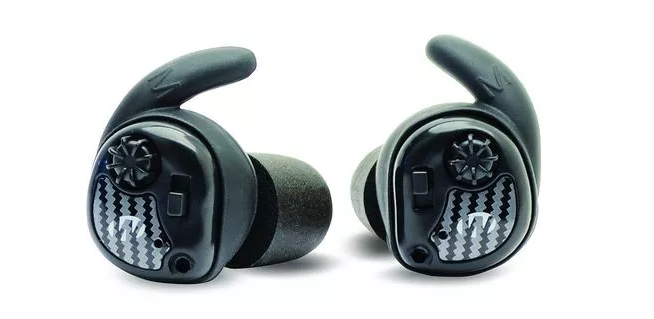
Walkers Silencer Ear Buds
These Silencer ear buds from Walkers have integrated microphones and speakers that deliver a crisp clear sound. When not amplifying ambient noises, the 25 NRR kicks in to protect your hearing.
2. Loud Sounds Can Cause Permanent Damage
High-decibel bursts of sound can rupture eardrums or damage bones in the middle ear. This can create immediate and permanent hearing loss. Yes, permanent, as in it cannot be reversed or treated. Not only could you lose some of your ability to hear, but you might notice a persistent “ringing” in your ears afterward, which leads us to…
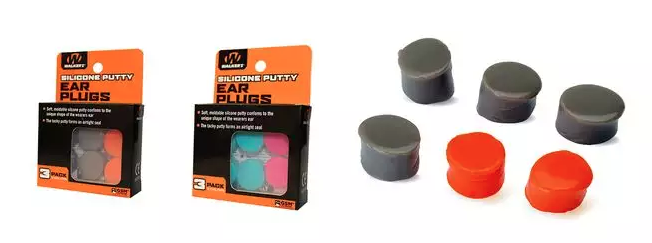
Walkers Game Ear Silicon Putty
You can mold your own silicon plugs with kits Walker’s Game Ear Silicon Putty. Typically, the putty forms and airtight seal with a NRR around 32 or so.
3. Tinnitus Can Be a Life-Long Companion
Commonly described as ringing in the ears, this malady affects as many as 25 million Americans every year. It is often caused by noise-induced hearing loss, and it can be permanent.
Technically, tinnitus is the hearing of sound when no external sound is present. It’s often described as a ringing, but can also sound like a clicking, hiss, or roaring. Occasionally, sufferers can hear unclear voices or music. The perceived sounds can be soft or loud, low pitched or high pitched, and appear to be coming from one ear or both.
While tinnitus is just a symptom of an underlying problem and not a disease itself, the most common cause is noise-induced hearing loss. The condition can cause anxiety, difficulty concentrating, and depression.
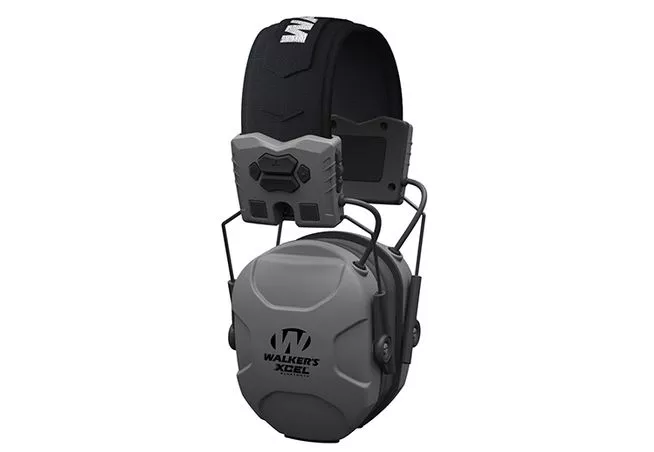
Walkers XCEL Muff
These XCEL earmuffs from Walkers offers hearing protection and Bluetooth connectivity, adding new functions to a classic design.
4. Waterfowlers Are Particularly at Risk
Perhaps no other group of hunters is more at risk of hearing loss than waterfowlers. When duck hunting, multiple shots are taken in quick succession, and the close proximity to other hunters in the blind increases exposure.
Just think about it, is there any other type of hunting where you are not only exposed to potentially more than 100 rounds from your own shotgun in a relatively short time period, but also the reports of the guns all around you—meaning your ears could absorb the sound of literally hundreds of gunshots in one morning.
For this reason, many waterfowlers today won’t go into the field without plugs or earmuffs, and many veteran hunters are sporting hearing aids.

Howard Leight Airsoft
Howard Leight’s reusable, corded Airsoft earplugs feature a NRR of 27 and hypoallergenic construction.
5. Noise Reduction Ratings Measure Performance
Noise Reduction Ratings, or NRR, tell you how effective a piece of ear protection is, so these are the numbers you have to pay attention to when comparing hearing protection products.
Your exposure to noise is limited by the NRR of the device you’re using. So, if your scattergun produces a blast of 147 decibels and your ear pro has a NRR of 29, you are only being exposed to 118 decibels—a reduction of 29 decibels.
Most commercially available models have NRR of 27 to 35 and electronic hearing protection usually has a cutoff of 85 decibels, meaning anything louder and the microphones automatically cut out the external sound, protecting your ears.
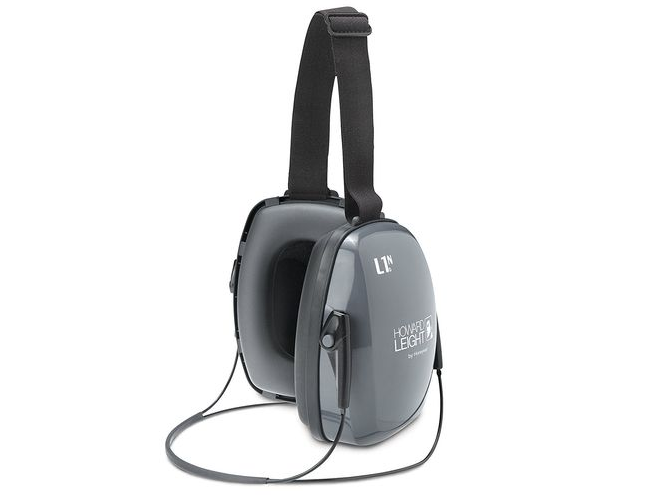
Howard Leight Leightning-L1N
Howard Leight’s Leightning-L1N earmuffs permit you to wear your favorite hat, thanks to a behind-the-neck design.
According to the U.S. Department of Health & Human Services, noise-induced hearing loss (NIHL) begins at levels as low as 85 decibels. That means that sounds as innocuous as heavy traffic can affect your hearing.
6. You Can Still Maintain a Good Cheek Weld
The big “cans” or bulky earmuffs of yore were dismissed by many hunters because they stuck out too far and didn’t allow for shooters to get a good cheek weld with a long gun, especially when raising a shotgun for an overhead shot of any kind.
That’s not necessarily true anymore. Today, most earmuff models feature slimline profiles designed to permit fluid shouldering. They’re also increasingly designed to work well with safety glasses.
Of course, you could bypass all that by using some kind of much smaller in-ear hearing protection.
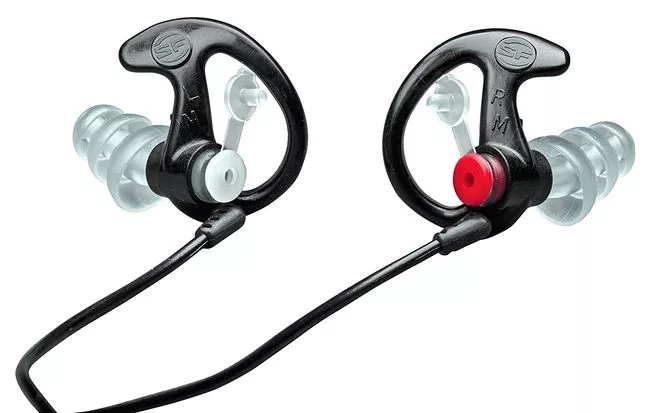
Surefire EP4 Sonic Defenders Plus
The unique design of the Surefire EP4 Sonic Defenders Plus earplugs ensures they stay put out in the field.
7. You Can Choose from In- or Over-Ear Protection
Muffs, like the kind shooting ranges have available for people who didn’t bring their own, are what many think of when hearing protection comes up, but there are myriad options available on today’s market.
Ear plugs, electronic hearing protection, traditional ear muffs, and even child-specific models are available. Some plugs can be custom molded to fit your ear shape and keep out the most sound, while others are made of expanding foam that fills your ear canal after a few seconds.
If you are in a particularly loud environment, like an indoor range or under a roof with some high-caliber rifles at an outdoor range, you can double up by putting ear plugs in and then muffs on top. When you get that first punch in the chest from the shockwave cast by a big ol’ muzzle brake on a .300 Win Mag, you might be glad you did.

Walkers Game Ear HD Power Elite
The Game Ear HD Power Elite looks like a hearing aid, but lacks the holes found on them to offer protection from loud sounds. When a high-decibel noise is detected, the amplification circuitry cuts out and the protective qualities take over.
8. In-Ear Models are Comparable to Muffs
Traditionally muffs were superior to ear plugs for a number of reasons but advances in technology has leveled the playing field. In past decades, muffs were the only platform large enough to incorporate electronics, but that’s all different now.
These days, you can get over-the-counter in-ear models with a NRR of 35, or custom-made offerings with even better protection.
While they are a financial investment, there are a number of electronic in-ear options on the market that work the same was as larger electronic hearing protection headsets do, but shrunk down to something not much bigger than regular earplugs that let you clearly communicate and hear your surroundings in the woods or the RO at the range. We’ll get into those more at the end.
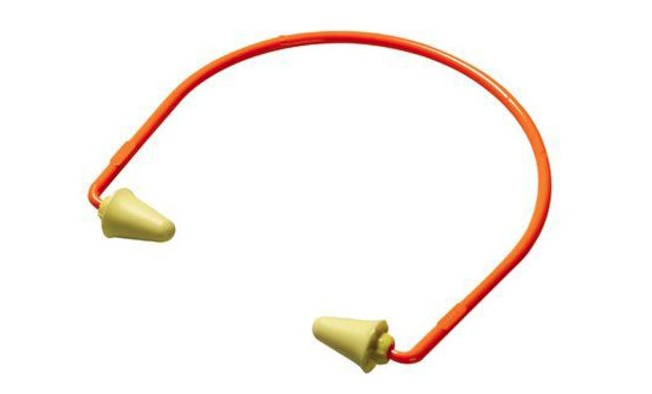
Peltor Banded Style Hearing Protector
While more likely to be seen on the skeet range, Peltor Banded Style Hearing Protector is also at home in a dove field or a duck blind.
9. Some Protection Can Actually Enhance Your Hearing
Models like Walker’s Game Ear effectively act to amplify sounds until a loud noise is detected. Then, the circuitry quickly shuts down the amplification and the protective qualities take over. So you can hear that distant buck and cancel out the report of your .30-06 without thinking about it.
Hearing protection products like these are compact, lightweight, and comfortable enough to wear for hours—a big advantage over earmuffs, especially on hot weather hunts.
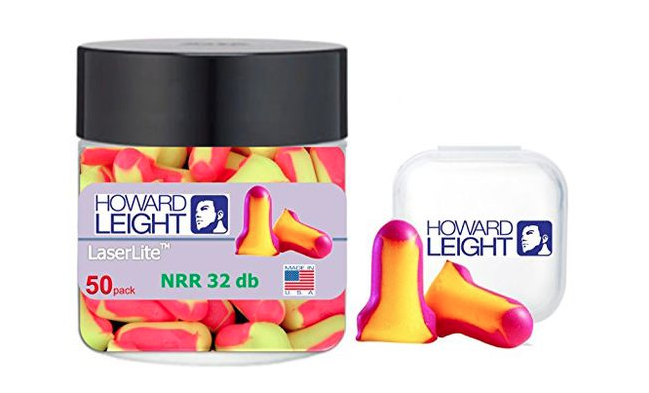
Howard Leight Disposable Plugs
These disposable Laser Lite Plugs from Howard Leight offer a NRR of 32 despite their inexpensive price point.
10. Hearing Protection Only Works If You Let It
If you don’t wear them they can’t protect you. You need to have a set that is comfortable enough to wear all day. With all the different makes on the market there is no reason why can’t find a pair that works for you. You might have to try a few things in the process, but protecting your hearing for the rest of your life is worth it.
Source:
https://www.range365.com/10-things-to-know-about-hunting-with-hearing-protection#page-10


